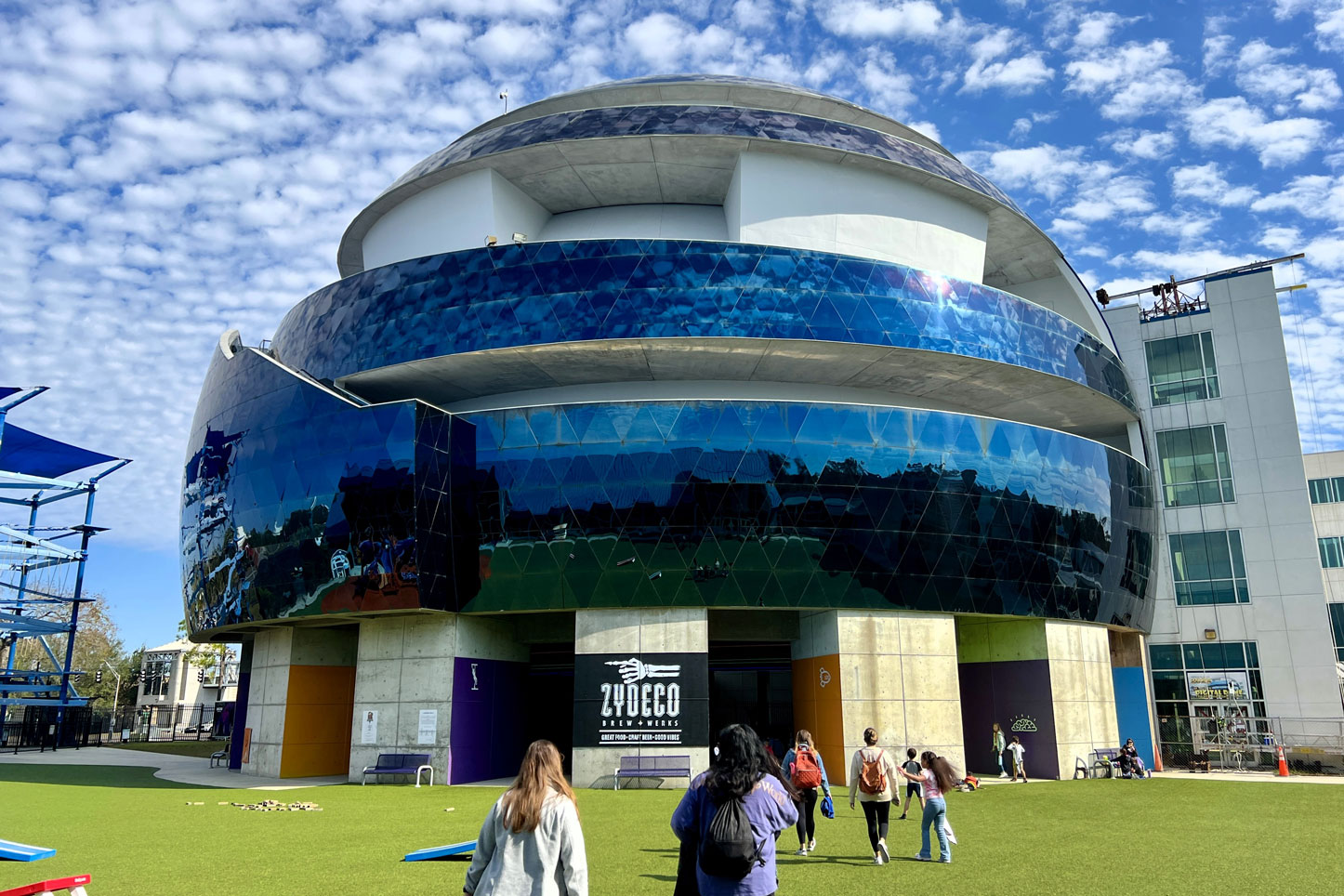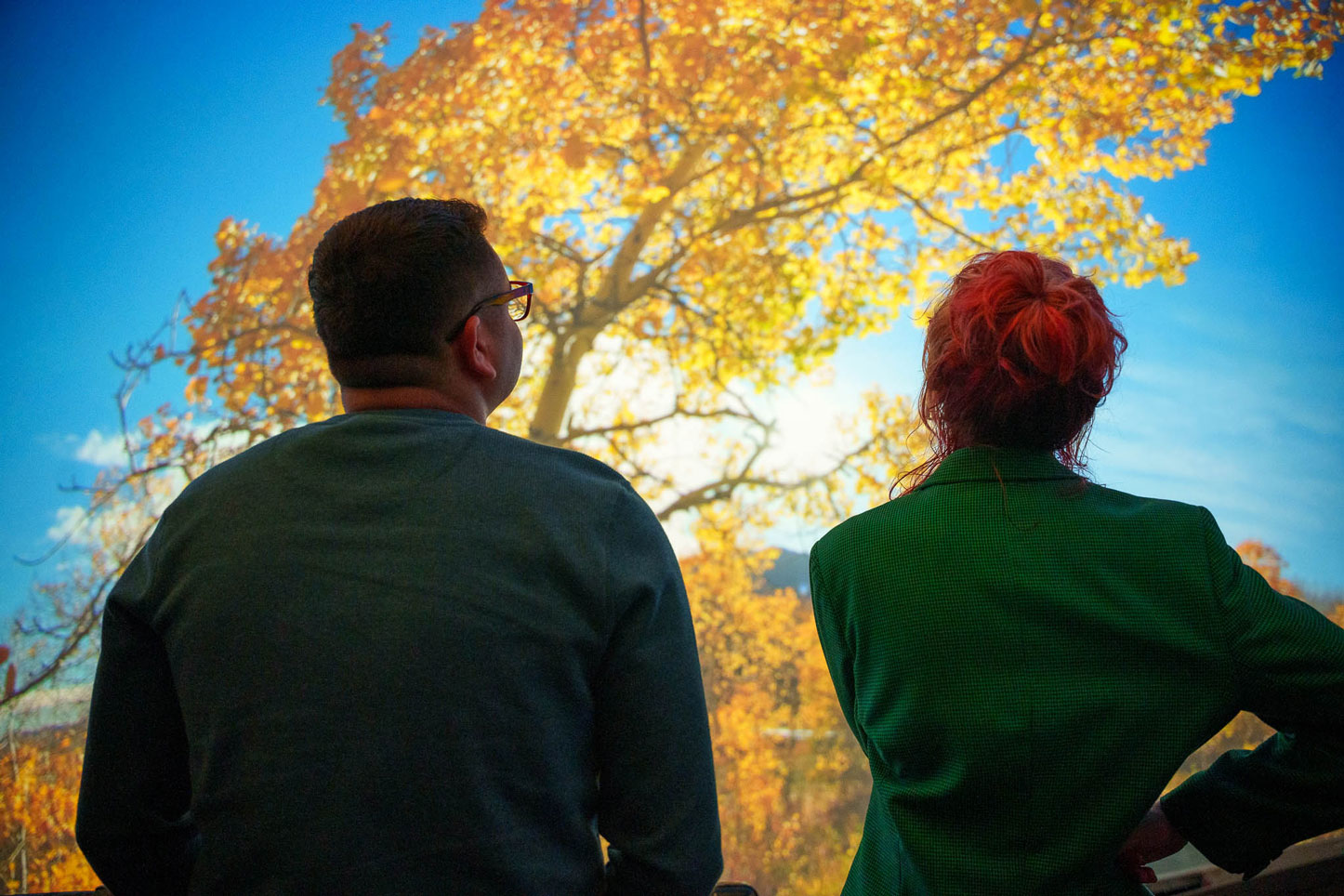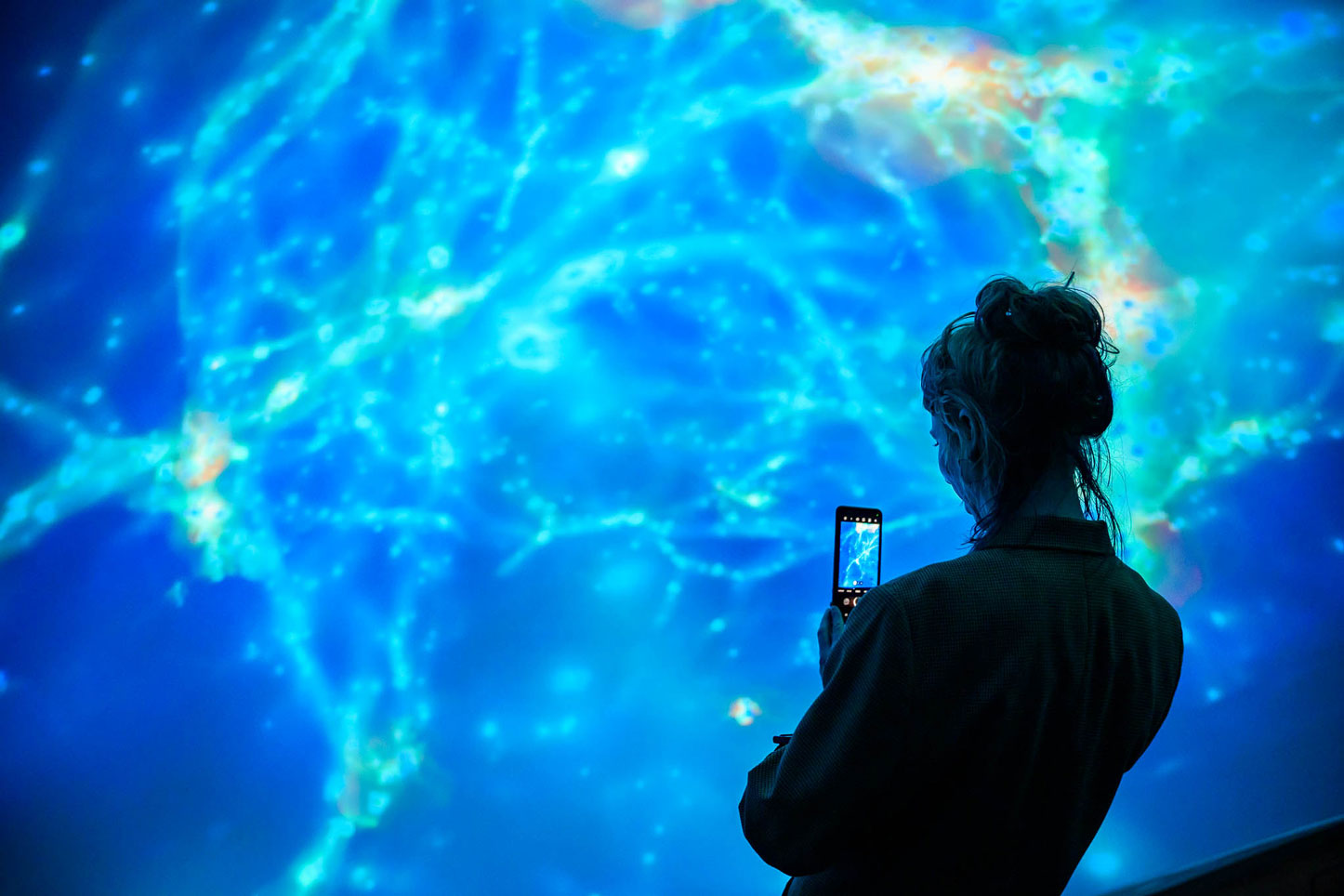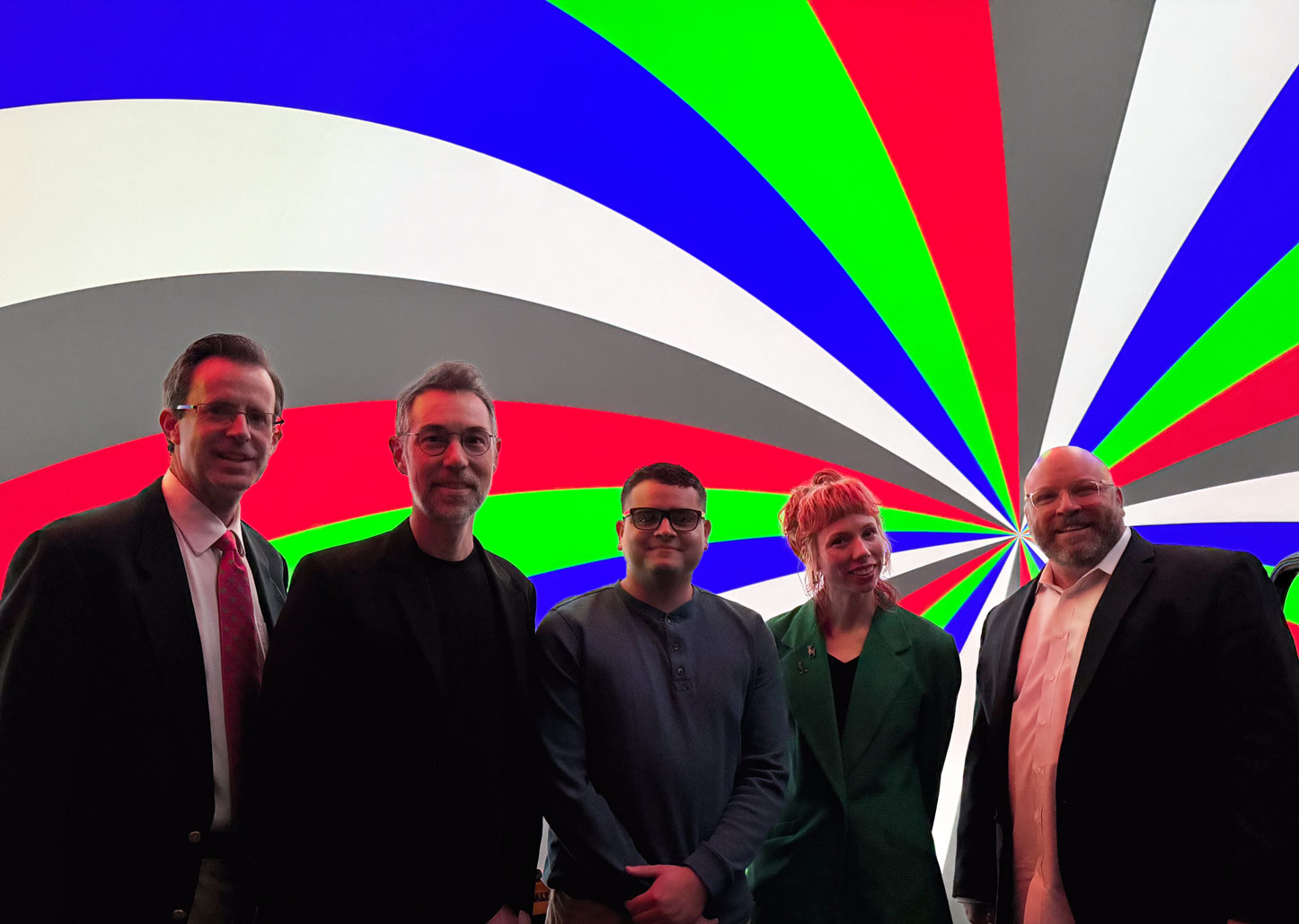USF students and MOSI spotlight new era for digital dome planetarium
By Jesus Gogo
College of Design, Art & Performance
Communications and Marketing
The Museum of Science & Industry is set to redefine immersive learning and entertainment with the unveiling of America’s second-largest digital dome planetarium, as announced in a recent press release from MOSI. Students from USF’s College of Design, Art & Performance were invited to explore the space to imagine the real possibilities this groundbreaking technology holds for their art.
 Exterior of the MOSI digital dome planetarium.
Exterior of the MOSI digital dome planetarium.
At the heart of this innovative space is an 82-foot screen spanning more than 10,000 square feet, with seating for more than 300 guests. Utilizing cutting-edge 8K technology, the new dome offers visuals that are sharper, brighter and more immersive than MOSI’s previous film system.
USF students recently had the unique opportunity to explore the possibilities of this high-tech space. Adrian Hermidas Otero, animation and motion design student, and K.J. Skidmore, a studio art student, were invited to test the potential of the upgraded dome for their creative projects. Accompanied by Chris Garvin, dean of the College of Design, Art & Performance, and Andrew Scott Ross, director of the School of Art & Art History, the students say they were inspired by the dome’s capabilities.
 Students Adrian Hermidas Otero (L) and KJ Skidmore(R) experiencing one of many visuals
at MOSI’s digital dome planetarium.
Students Adrian Hermidas Otero (L) and KJ Skidmore(R) experiencing one of many visuals
at MOSI’s digital dome planetarium.
"I can imagine the possibilities are probably endless with this technology," Otero shared. "If I were to make animations or films using this technology, it’s just going to make it a lot more impactful for everyone visually and emotionally."
 KJ Skidmore, studio art student taking in the large scale projection.
KJ Skidmore, studio art student taking in the large scale projection.
“One of my main intentions for this animation was to make the viewer feel connected and immersed in the visuals and create a believable sense of space and depth. Turning it into a format compatible with the 360 Digital Dome at MOSI would make this sense of depth and space much more realistic. The audience will feel like they are inside the animation, feeling and going through the same phases that the character is going through.”
 Pictured from left to right: John Graydon Smith, MOSI CEO; Andrew Scott Ross, director
School of Art & Art History; Adrian Hermidas Otero, animation and motion design student;
KJ Skidmore, studio art student; Chris Garvin, dean of the College of Design, Art
& Performance.
Pictured from left to right: John Graydon Smith, MOSI CEO; Andrew Scott Ross, director
School of Art & Art History; Adrian Hermidas Otero, animation and motion design student;
KJ Skidmore, studio art student; Chris Garvin, dean of the College of Design, Art
& Performance.
MOSI’s investment in the digital dome is a statement in itself. “We believe in the power of STEM learning to transform lives. This investment at MOSI will give students in Tampa Bay the biggest and best STEM learning destination anywhere in the Southeastern U.S.,” said MOSI CEO John Graydon Smith.
This revitalization reinforces MOSI’s commitment to the Tampa Bay community and its close relationship with USF. For USF students such as Otero and Skidmore, the digital dome represents more than an educational resource, it’s a canvas for endless innovation and storytelling. As the Digital Dome Theatre prepares to open its doors, it’s poised to revolutionize the way we experience art and science, offering students a launchpad to create work that resonates visually, emotionally and beyond.
Photography by Jesus Gogo